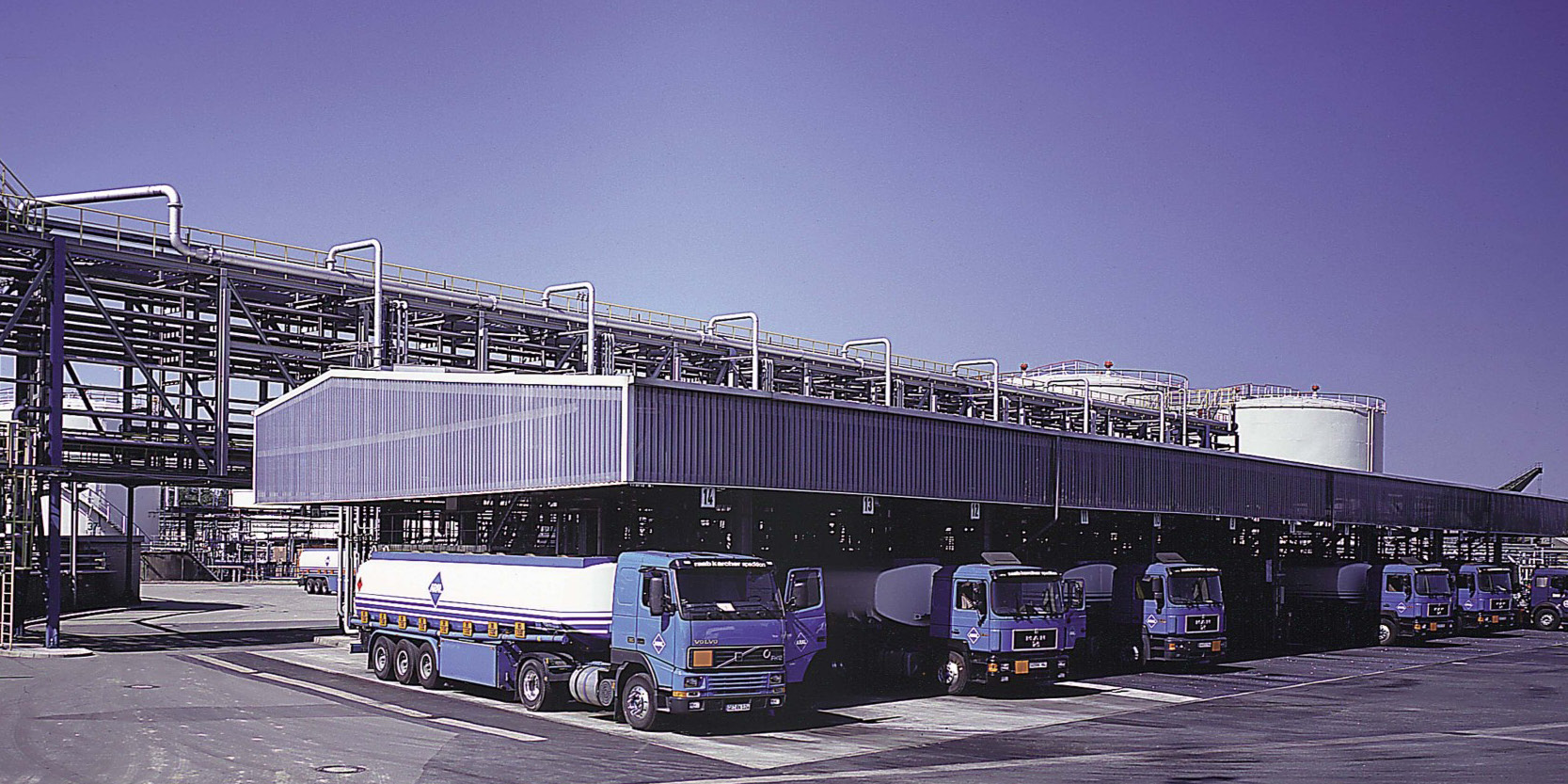Tank truck handling systems
The filling systems for tank trucks are designed according to economic and ecological aspects. The installation takes place in roofed filling areas that are designed for the handling of water-hazardous products.
The filling rates can be designed up to 2,200 liters/min. A control and data acquisition system allows the operator to trigger all functions themselves. Incorrect operation or manipulation is not possible. The monitoring and processing of the loading documents takes place in a central control room.
The installation areas of the tank trucks serve as a containment area in the event of an incident and are designed for systems that deal with substances that are hazardous to water.
A large number of auxiliary systems are relevant for the design of tank truck loading systems and must be taken into account during complex planning.
- Operations building (Central control room)
- Foundations and containment areas
- Road construction and pavement systems
- Pump stations
- Compressed and control air systems
- Steel structures for roofing and pipe routes
- Additive systems and slop systems
- Drainage and separator systems
- Measurement recording systems
- Fire extinguishing systems
- Control and automation systems
- Visualizations
- Loading computer systems
- Power supply
- Transformers and power supply systems
- Corrosion protection
- Earthing and lightning protection systems

Since the beginning of the 1990s, tankers from the petroleum industry in Germany and Europe have been filled for gas station supplies using the bottom-loading principle. Dipl.-Ing. SCHERZER GmbH was extensively involved in the development in Germany and planned, optimized and put the first systems in Gelsenkirchen and Koblenz into operation for ARAL AG (now BP AG). A wide variety of bottom-loading systems, from pneumatically controlled articulated loading arms to hose loaders, were tested here. SCHERZER was also involved in the extensive testing of the quality assurance systems (QSS and ASS) and carried out joint studies with TÜV. Today, over 30 years later, the bottom-loading system is in use worldwide for quickly filling tank trucks. By loading a tank truck with up to 5 bottom loaders at the same time and thus of course up to 5 different products, significantly increased loading performance is possible. During the development and extensive testing of API couplings for the bottom-loading process in Germany, SCHERZER also supported what was then ARAL AG and helped develop the optimal system for Germany.
The top-loading system has been almost completely replaced by the bottom-loading system. For several years now, it has been forbidden in Germany to fill petroleum products of hazard class A1 into tankers from the top. The top-loading process is therefore mainly used in the petroleum industry for loading diesel, heating oil and JET into tank trucks.
However, the top-loading process is still very common in the chemical and petrochemical industries. In many cases, meanwhile the simplified bottom-loading principle with an articulated loading arm is used.
Due to our many years of experience in this area, we are able to design and plan the optimal system for each customer. There are a variety of technical options and variants for your tank truck loading system.
Find out more about our individual areas of rail car handling systems here

